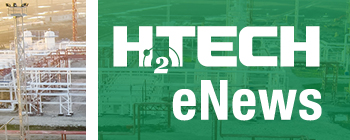News
The public participation plan for the green H2 network in Extremadura is underway
María Guardiola, President of the Regional Government of Extremadura, and Enagás CEO Arturo Gonzalo held a meeting to launch the Public Participation Conceptual Plan (PPCP) for the Spanish H2 backbone network in Extremadura.
María Guardiola obtained first-hand details of the project, which will contribute to the sustainable economic development of Extremadura and encompass 51 municipalities, 29 in Badajoz and 22 in Cáceres. It will feature 28 participatory seminars, to be held from 3 June to 11 July.
These participatory seminars, open to the general public, will begin in the town of Benquerencia de la Serena (Badajoz) and end in Plasencia (Cáceres). Moreover, all the towns visited by the PPCP will set up information points for the general public.
400 km of H2 network in Extremadura. Extremadura is the region that has been chosen for the largest public participation plan of its kind in Spain, one that will cover a total of 13 autonomous communities and over 550 municipalities, following its initial launch in Puertollano (Castilla-La Mancha) on 25 April.
The initial layout of the future H2 network in Extremadura will include approximately 400 km of pipelines along the so-called Vía de la Plata Axis and the Puertollano Connection. More specifically, this network will have three sections in Extremadura: from Huelva to Mérida, about 105 km in length, from Mérida to Salamanca, about 180 km in length, and from Almendralejo to Puertollano, about 115 km in length.
The Spanish H2 backbone network’s PPCP will harness the inputs of the autonomous communities and municipalities through which it runs, the 50-plus public administrations, 380 organizations and associations and all the citizens interested in taking part. The Plan’s deployment in Spain is expected to take 18 months, and, once it has been completed, a final report on the results of the process will be drawn up.
The aim of the PPCP is to share information on the future H2 network with all the stakeholders, resolve queries, explain the need for the project, foster the active participation of the communities in the process, mitigate any impacts on the ground and guarantee the most appropriate social and environmental actions from an early stage.

